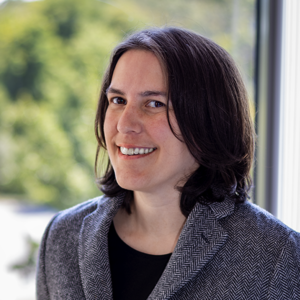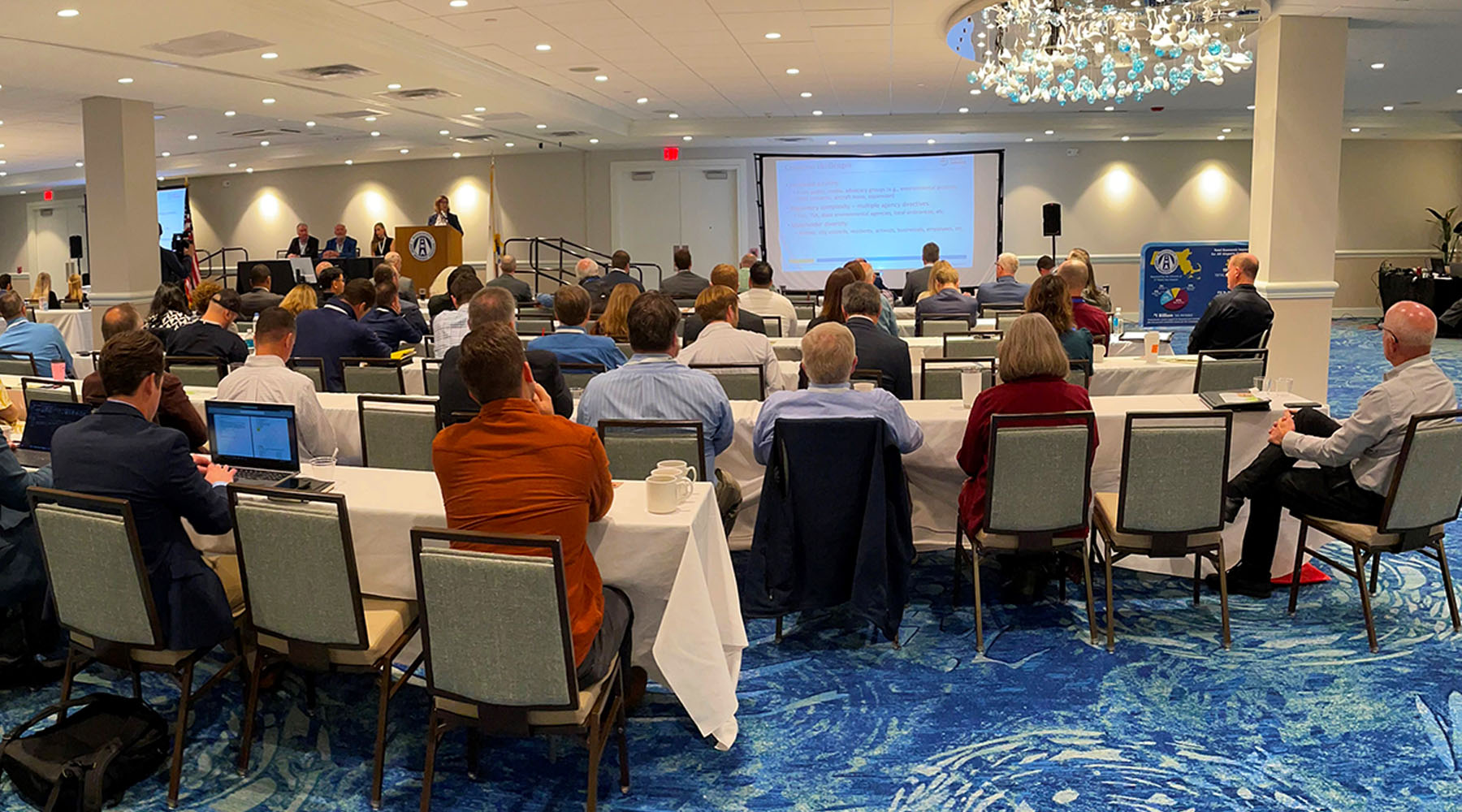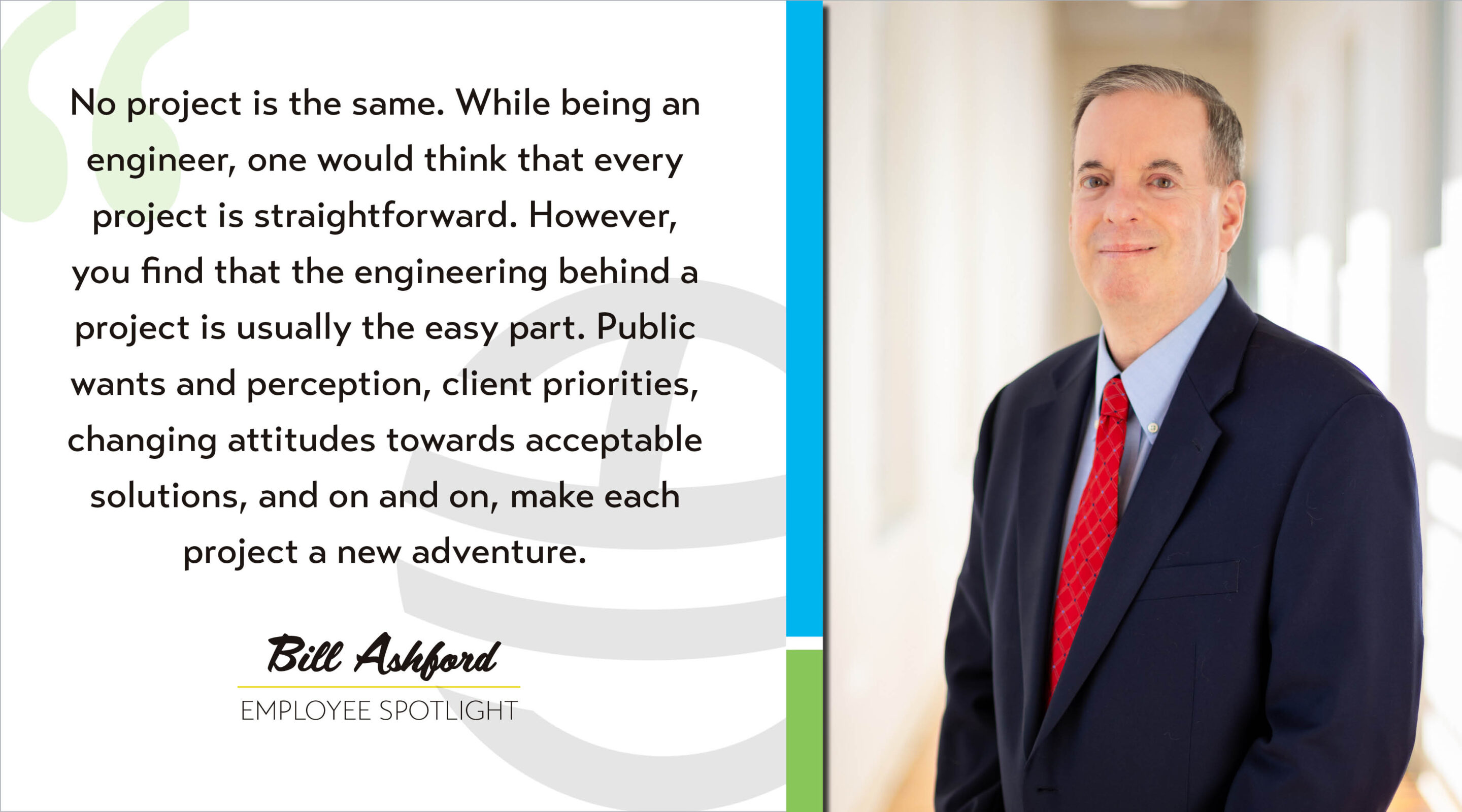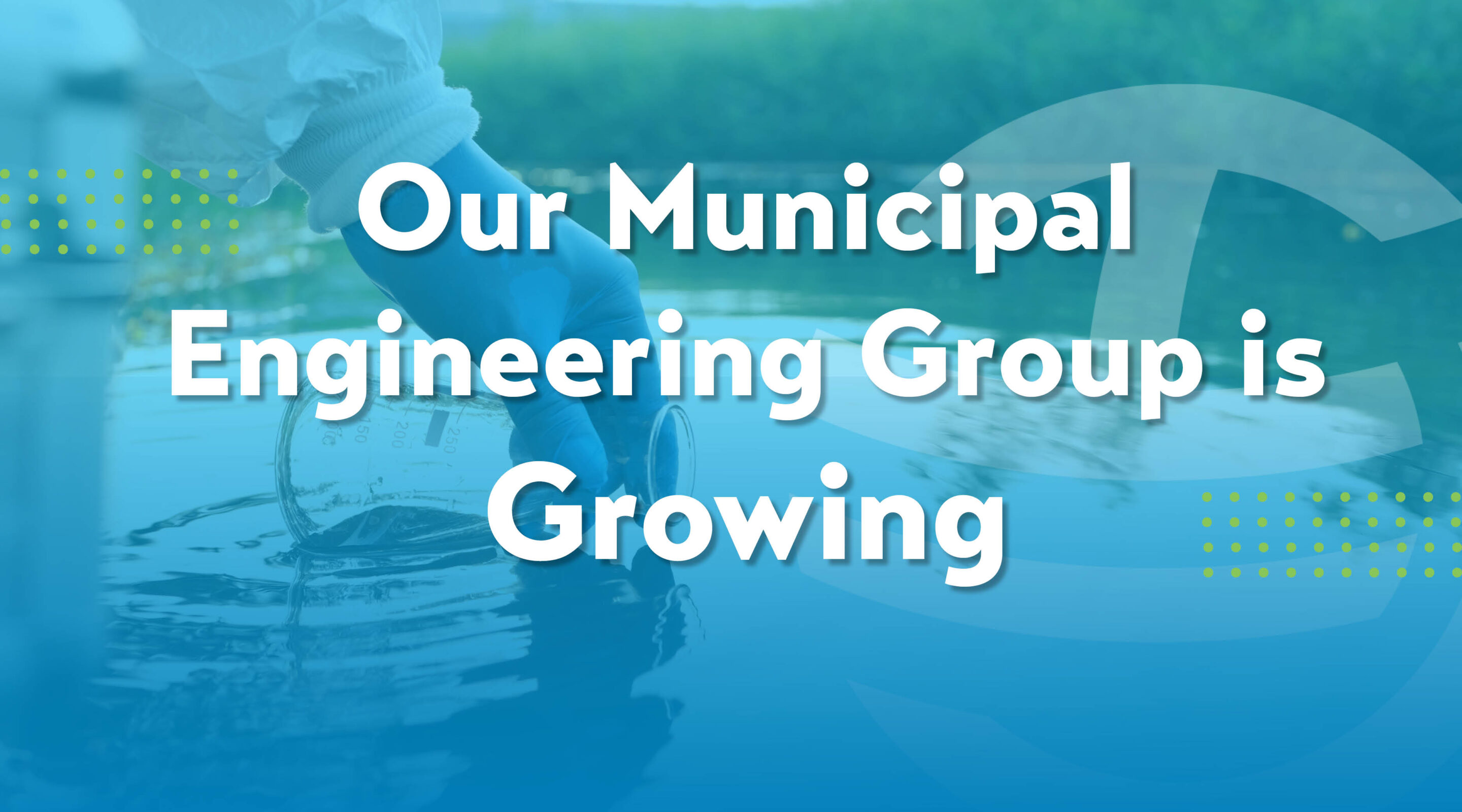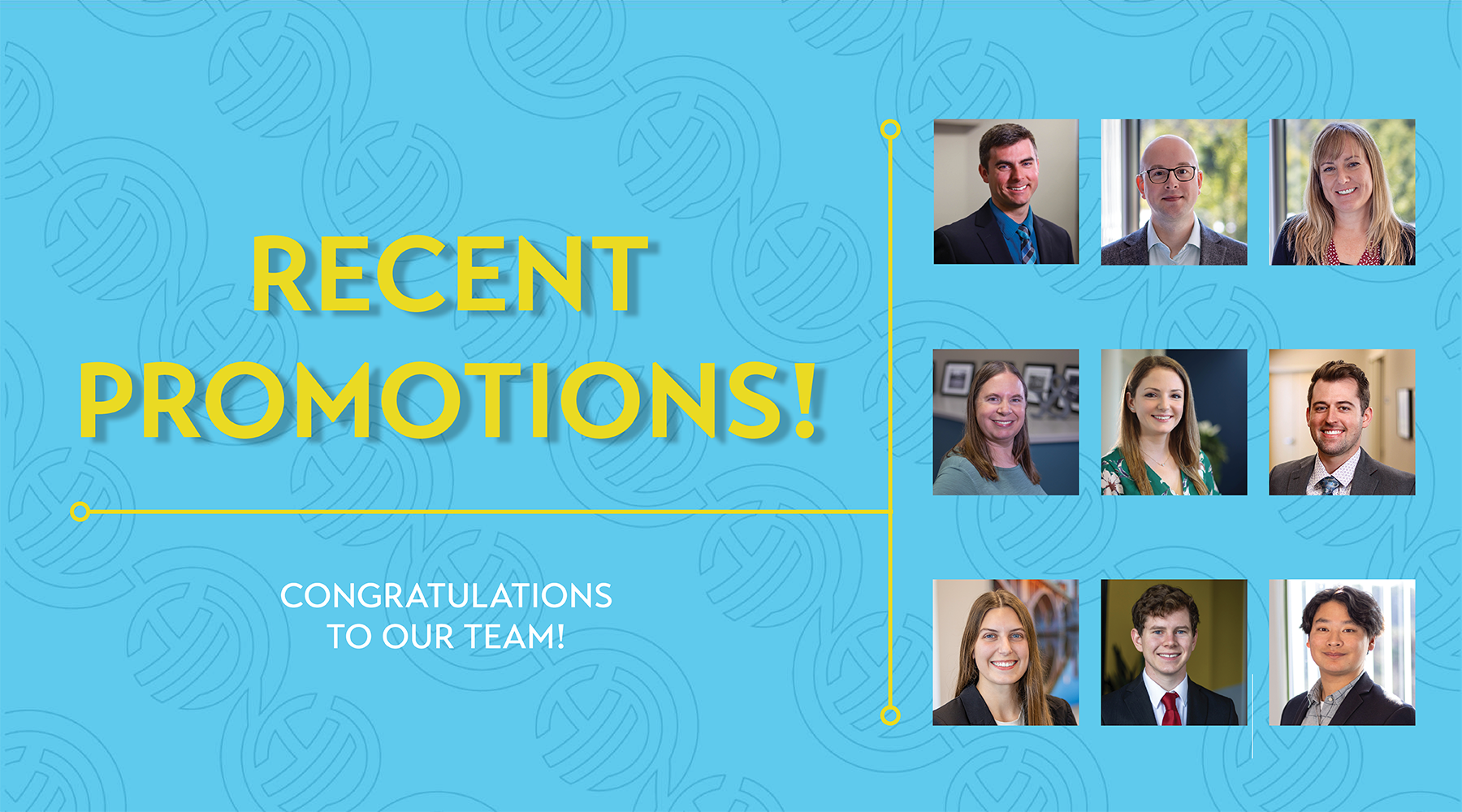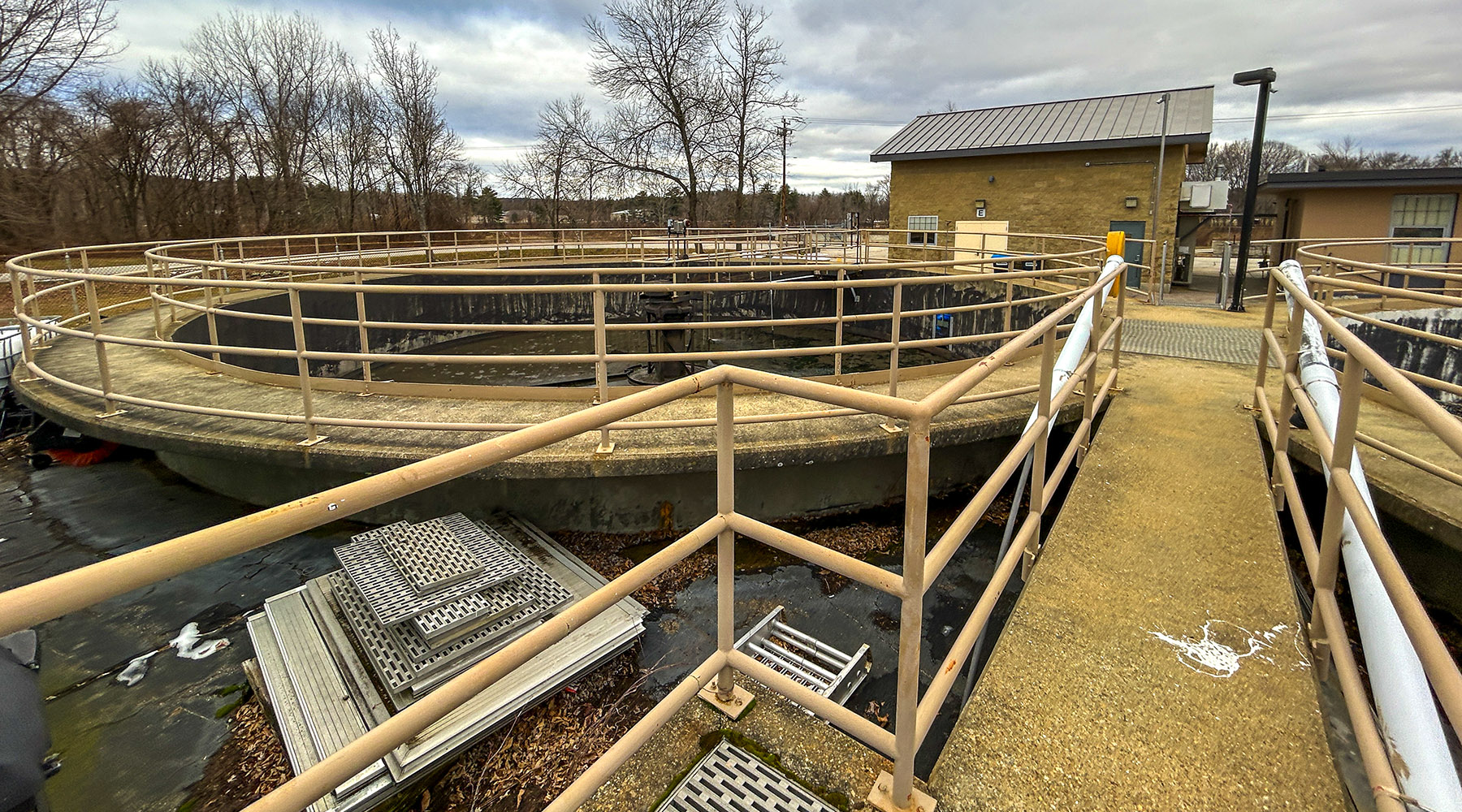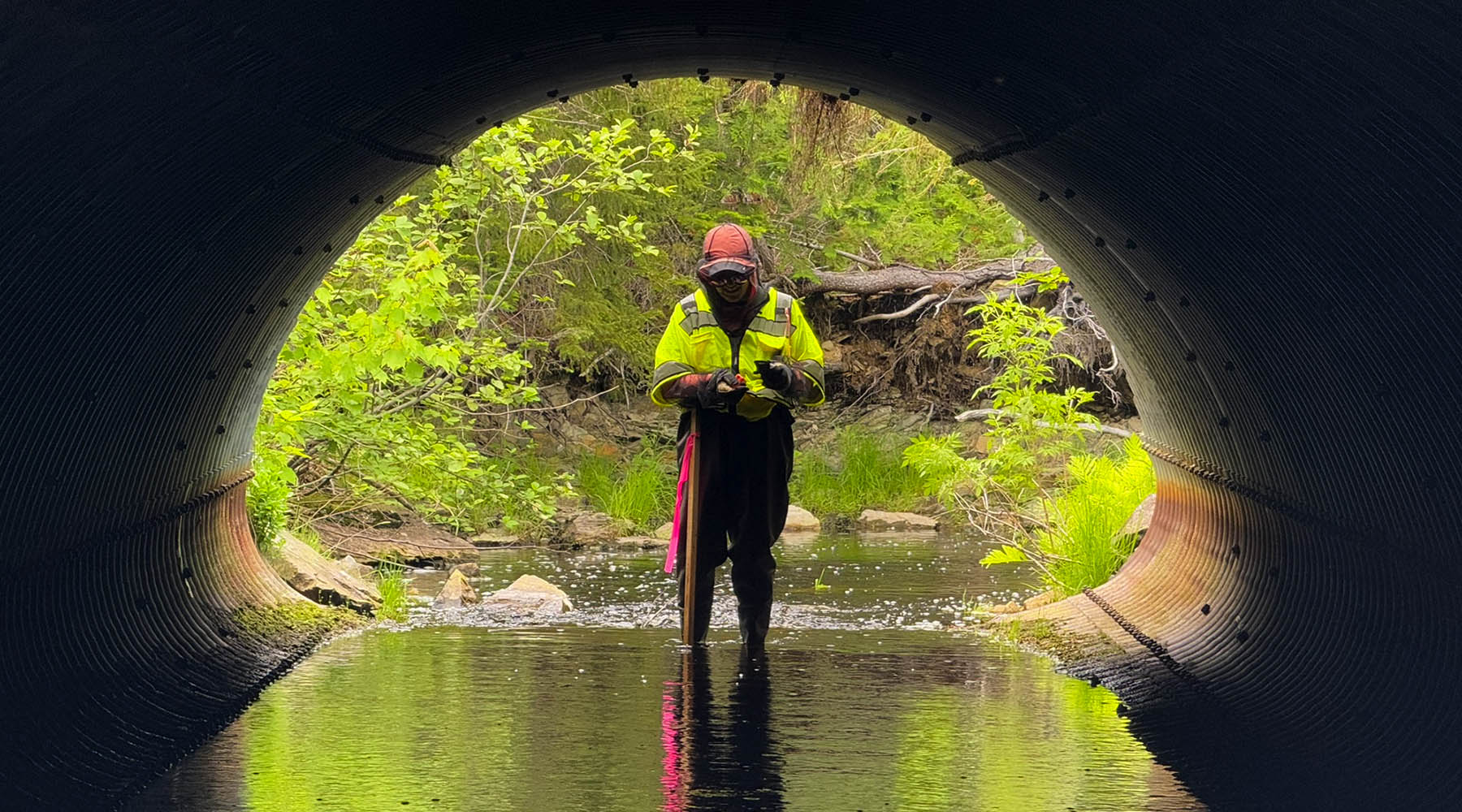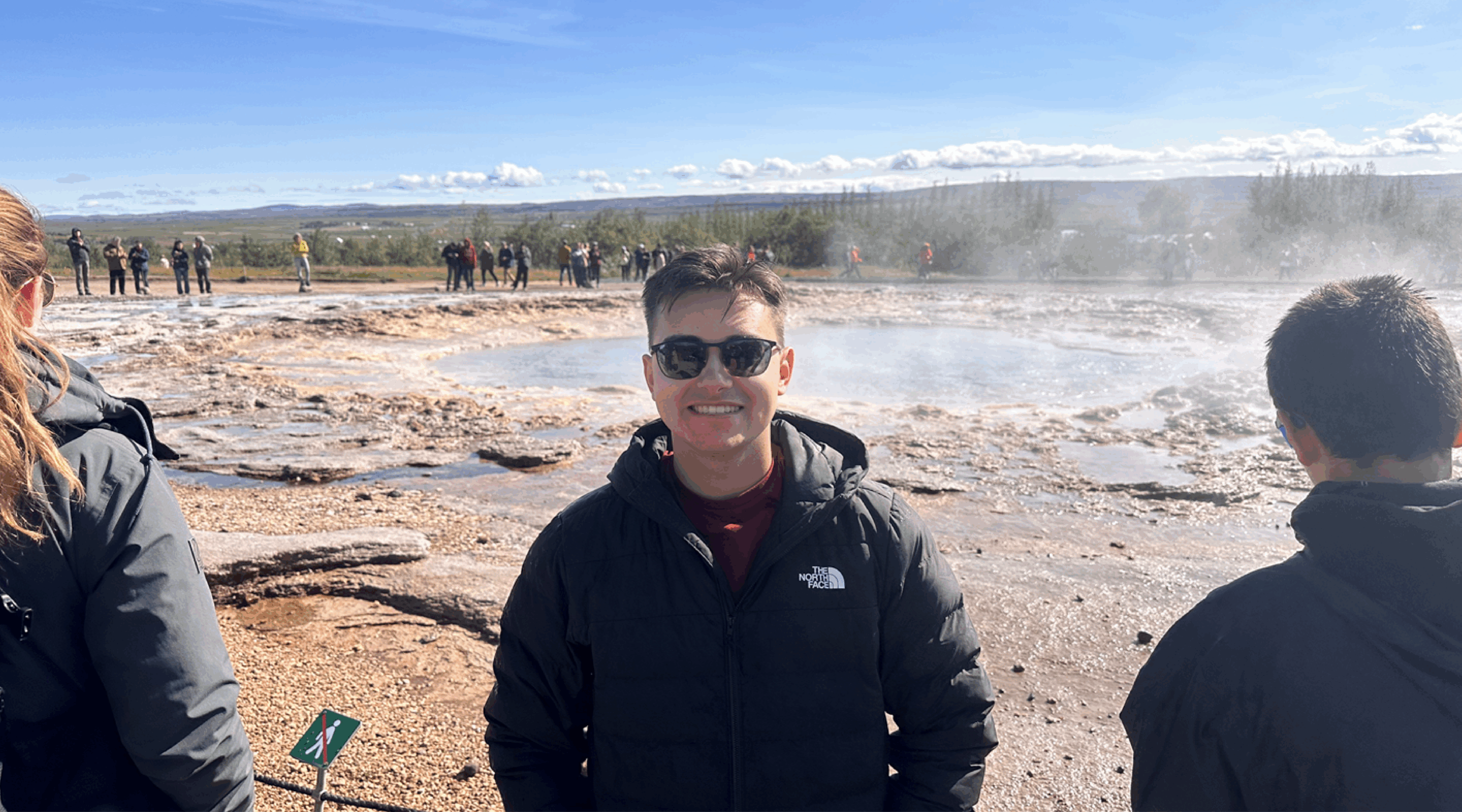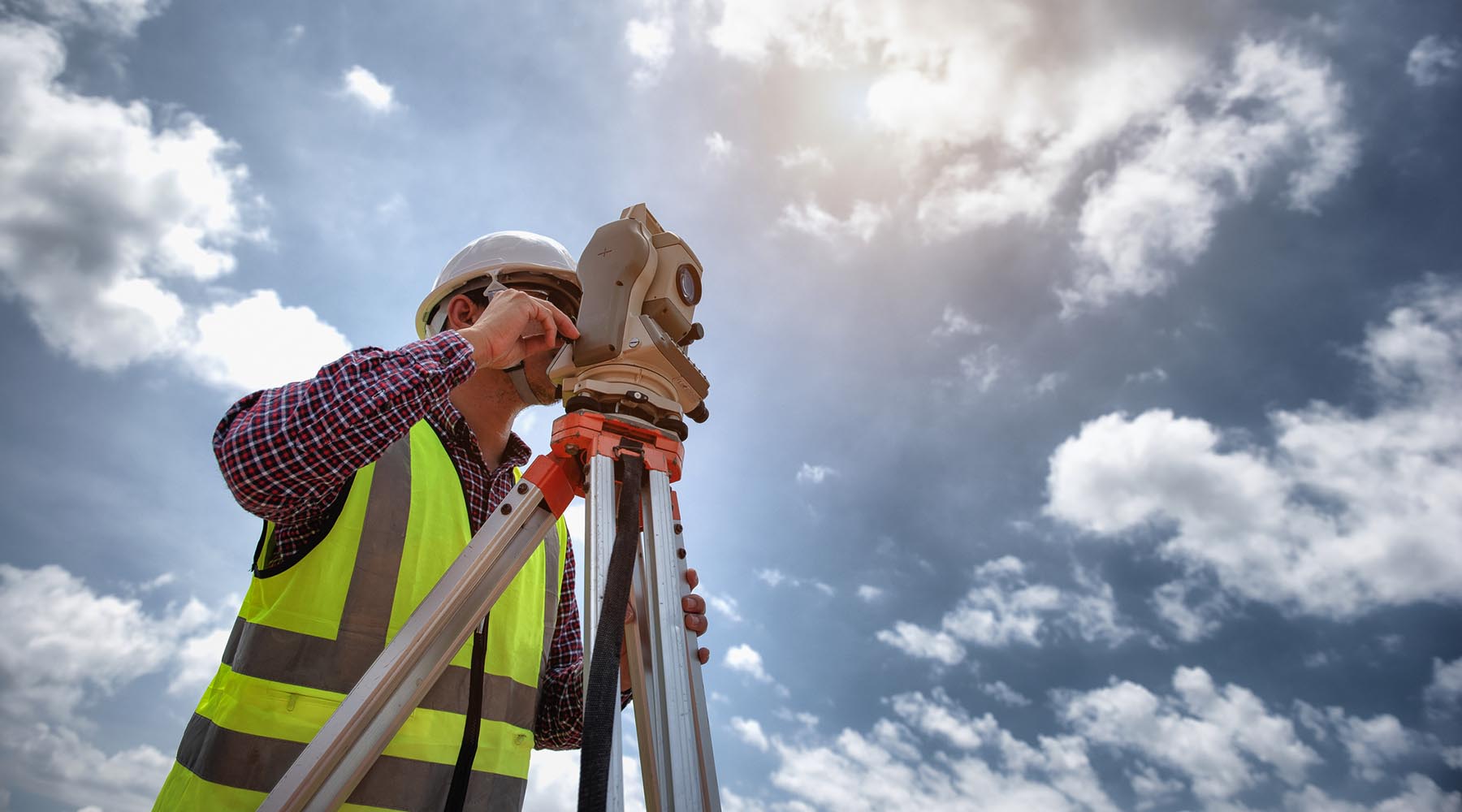Summer always seems to fly by, and summer 2025 was no different. Part of what accelerated the time for me was being involved in a fast-paced, interesting project for MaineDOT. Hoyle Tanner has teamed with WSP to work for MaineDOT on a bundle of 11 bridge replacements throughout the state. The sites are all in central Maine, largely in rural areas, and all cross over water. That’s where I come in, as I am part of the hydraulics team at Hoyle Tanner. This is what my work has been like this summer.
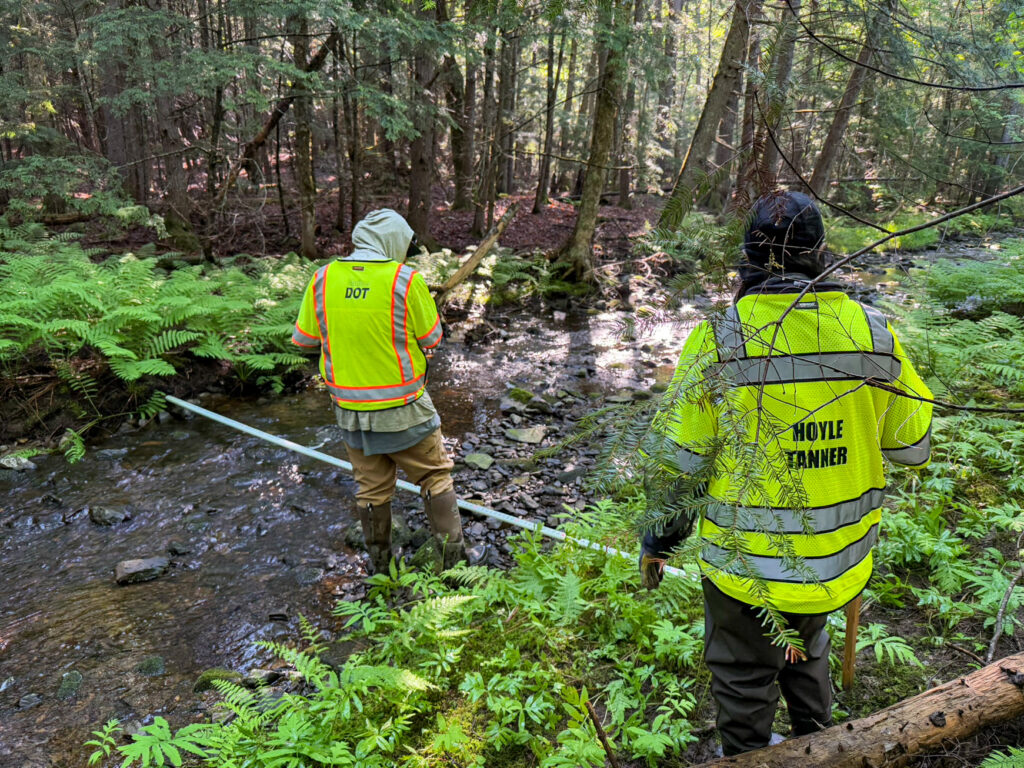
Making a Splash in the Field
Survey data was collected for all the sites. However, some field verification is generally required to get a better understanding of what is happening hydraulically at a bridge site. In early June, my coworker and I set off for the central Maine woods. Our homebase for the week was a lovely hotel in Millinocket, where we had the unexpected pleasure of spending time with five adorable rescue cats before and after work every day.
The field work involved “adventuring with boundaries” as we called it. Many of the sites had dense vegetation so it was difficult to tell from aerial imagery how far away certain hydraulic features were, or if what we saw in the images still existed—was there a beaver dam? Where was the confluence of two streams? Oftentimes the best way to get to these features was to trek in the stream. It was quite the experience to load up a Ziploc bag with gear, pack it into my Hi-Viz vest’s back pocket and get into the stream in my waders. It was also reassuring to know that our adventure wouldn’t leave us truly stranded in the woods, we always knew where the road was if we needed to bail.
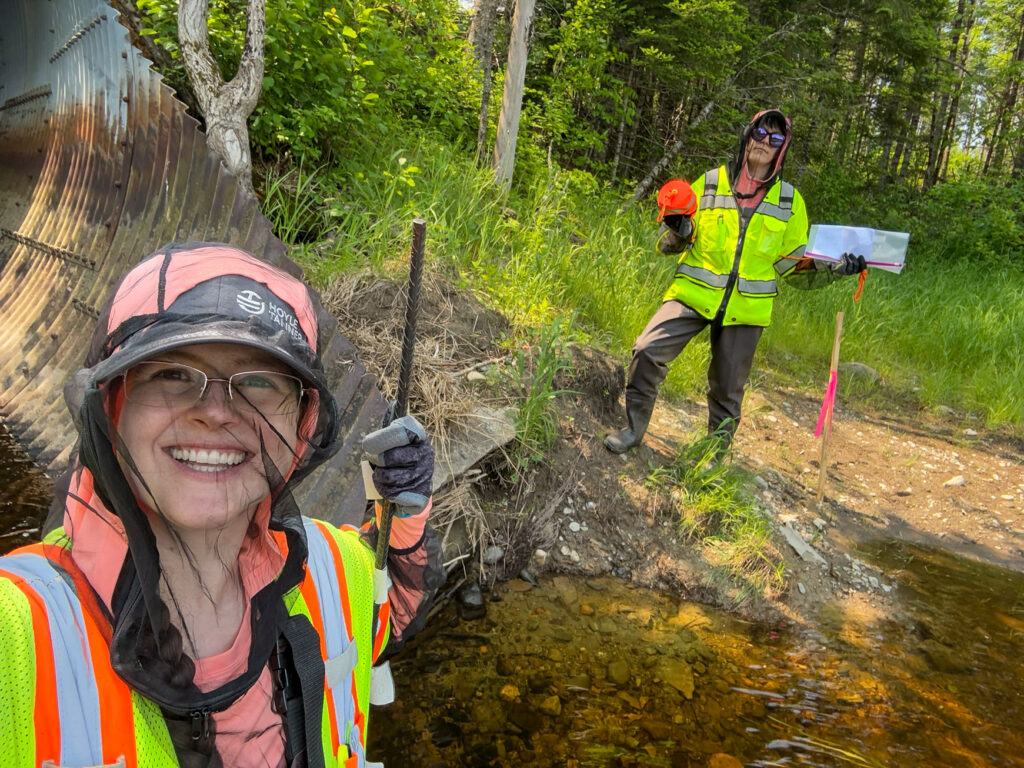
Gathering Data
In addition to locations of hydraulic features, other important information we gathered in the field was: verifying structure dimensions, assessing the material of the streambed, determining the type of land cover on the banks and floodplains, taking rough measurements of stream velocities, and measuring water depths. The data we gather is important because it helps us build as accurate a picture of the project site as possible when we are creating hydraulic models as part of the design process.
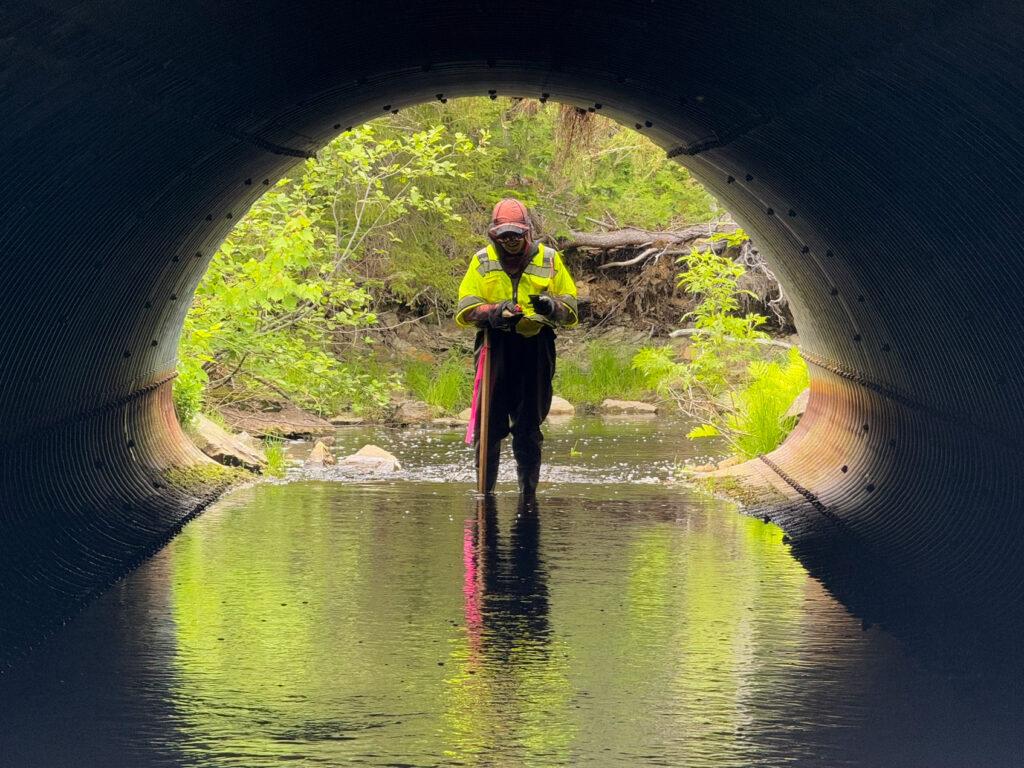
Putting the Data to Work
Back in the office, we input the field data, along with survey and LiDAR topographic data, in Aquaveo’s Surface-water Modeling System (SMS) to build 2-dimensional hydraulic models of the project sites. The streambed material and land cover of floodplains gets entered as Manning’s n roughness coefficients. The measured depths help inform how deep the channel in the model should be. The measured velocities help calibrate the model.
Once the models were completed, we used the results to inform the design of the replacement bridges. Many of the replacement structures are large box culverts. Modeling was also done to demonstrate that the proposed structure would work hydraulically for the site. Many of the sites are in important fish habitats, so we had to also design the structures to keep velocities within acceptable ranges for fish passage.
Bonus Wildlife Encounters
While in the field, it is common to see animals. This time, we witnessed something truly special— snapping turtles laying eggs! I also got to help a non-snapping turtle cross the road safely.
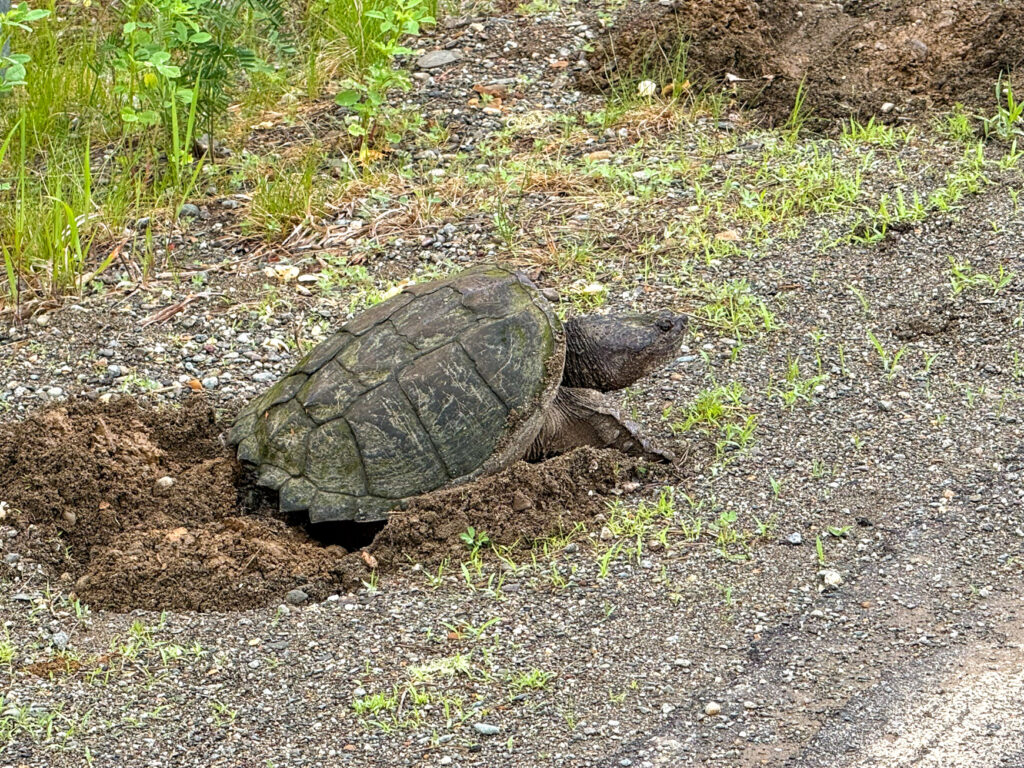

Reflecting on the week, it’s clear that fieldwork is more than just numbers and measurements—it’s about curiosity, discovery, and connection with the landscape. Each site offered its own challenges and surprises. It reminded me that the best engineering solutions are rooted in a real, tactile understanding of the environment. From the rescue cats to the turtles and the wild beauty of Maine’s woods, this project was a reminder of why getting out into the field matters. The data we collected will shape safe, resilient bridges, but the memories and insights gained along the way are just as valuable. If you’re looking for opportunities with Hoyle Tanner, our growing team is the place to be! Check out our job listings!

